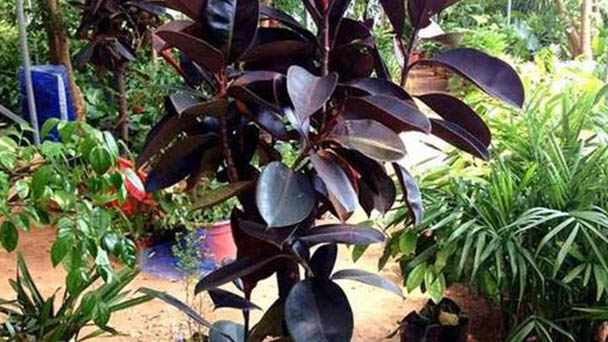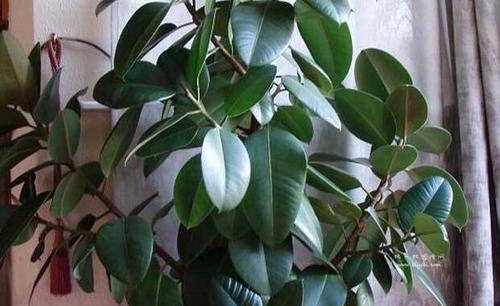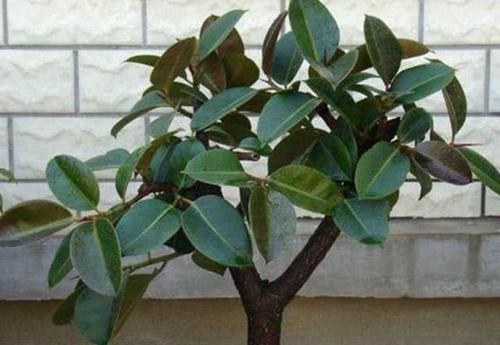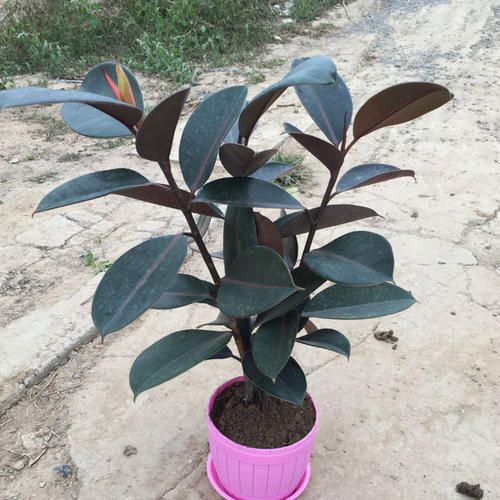How to take care of Rubber fig
Written by Maggie
Oct 29 2021

Rubber figs are now popular in recent years for decorating home. But there are some problems when we grow it. How to take care of Rubber fig if its leaves fall or it is frozen? Here are some caring tips.

Rubber Fig - Most Common House Plant
How to take care of Rubber fig leaves falling
There are many reasons for rubber fig leaves to fall. When soil hardens, it should be dealt with in a timely manner in the soil, digging and processing once every half a month. When the temperature is too low, the plant will be moved to the maintenance in the warm room, and control room temperature above 13 ℃. If watering is too much, the soil should be changed in time. After cutting the rotten roots, the pot should be placed again. After that, it is advisable to keep the pot moist.
1. Soil for Rubber fig
Rubber fig likes to be in a matrix with strong drainage, loose and fertile. If the soil is too hard and hard, respiration of the root system will be blocked and the plants are prone to deciduous phenomenon. In this case, it is necessary to timely carry out soil replacement treatment, and then loosen the soil every half a month or so to promote the absorption and growth of the root system.
2. The temperature for Rubber fig
Rubber fig is a tropical tree species, which likes to grow in a warm environment. If the temperature in the growing environment is very low, the leaves will wither and fall off, which is one of the reasons why Rubber fig loses the leaves. At this time, the plants should be moved to the greenhouse to improve the room temperature during the winter. It is best to control the room temperature above 8℃.
3. Watering for Rubber fig
Rubber fig is a hygrophilous plant, but during curing at ordinary times also can't overwater. If too much water, it can lead to formation in the basin of water, and can lead to root rot, appearing as the phenomenon of yellow leaves falling. At this time, the water will be cut off after the root out roots rott, put it in the basin after disinfection.
4. Ventilation for ventilation
Rubber fig prefers to grow in a moist air environment. If the air is too dry, the photosynthesis of the leaves will be blocked. Especially in the summer of high temperature, some of the lower leaves will turn yellow and fall off. At this time, it is necessary to pay attention to ventilation and spray water mist around in time to increase air humidity.
5. Increase fertilization
ventilation has a low requirement for fertilizer, but it cannot be fertilized completely in the growing season. If the nutrient is too little, it will lead to the lack of nutrients in the plant and cause the leaves to turn yellow and fall off. Then, a thin cake fertilizer solution should be applied in time. After that, fertilizer should be applied several times, mainly with thin fertilizer.

Rubber fig is one of the best trees for pots
How to care for Rubber fig
The cold resistance of ventilation is not strong. If the plant is frozen in winter, put it in a greenhouse in time, control the room temperature above 13℃, and give sufficient long sunshine treatment. If the temperature is lower than 10℃, artificial heating should be carried out.
1. Protect it from the cold and keep warm
The cold resistance of ventilation is very poor. If the leaves will wither if they are frozen in winter, it is better to put the plants in a greenhouse, which can also promote the germination of new buds. In addition, the room temperature should be controlled at about 13℃, and a layer of plastic film should be covered when the temperature is lower than 10℃, or the method of burying ground should be adopted for heating.
2. Increase light for Rubber fig
ventilation is a light-sensitive plant, which is prone to poor growth in winter when the temperature is low. After frostbite, the plant should be moved to the room with ventilation to the sun in time for curing. It should be given sufficient sunshine instead of being put in the environment with too much shade, so as to promote the photosynthesis of branches and leaves and promote the growth of new buds.
3. Control watering for Rubber fig
ventilation is a tropical plant, but it is more suitable to grow in a moist substrate. When ventilation is frozen, the amount of water should be timely controlled, and the plants should be moved to a ventilated place. Watering should be carried out in the principle of both dry and wet.
4. Grafting treatment for Rubber fig
In winter, ventilation will grow slowly. When the root of the plant is frozen, grafting should be used to obtain new plants. At this time, the plant will be shrivelled.

Rubber Fig - one of the best indoor trees
Read Next: Rubber Tree Plant (Rubber Fig) Care & Growing Guide
Latest Updated
- Benefits of Bugleweed - 7 Science-backed Health Benefits
- Bugleweed Dangers & Side Effects - Is It Poisonous?
- How to Plant Evergreen Trees - What You Should Know
- When to Plant Evergreens - Grow Guide for Evergreen Trees
- 12 Wonderful Evergreen Shrubs for Your Garden
- 12 Popular Evergreen Plants with Pictures for Beginners
- When And How To Prune A Lilac Bush Like a Pro
- How to Grow & Care for Lilac Vine (Hardenbergia Violacea)
- Japanese Lilac Tree (Syringa Reticulata) Care & Propagation Guide
- Shumard Oak Pros and Cons - What to Know
Popular Articles
- Winter maintenance of Antirrhinum Majus
- How to Grow Terminalia Mantaly Tree
- How to Grow and Care for Crossostephium Chinense
- How to grow Antirrhinum Majus in spring
- Peristeria Elata (Dove Orchid) Profile: Info & Care Guide
- Underwatered Snake Plant (Sansevieria Trifasciata) - Signs And How To Fix
- How to Care for Brazilian Jasmine Plant (Mandevilla Sanderi)
- How to Grow & Care for Graptopetalum Purple Delight in Summer
- Rosa Chinensis (China Rose): Plant Growing & Care Tips
- How to Care for Baby Sun Rose (Aptenia Cordifolia)